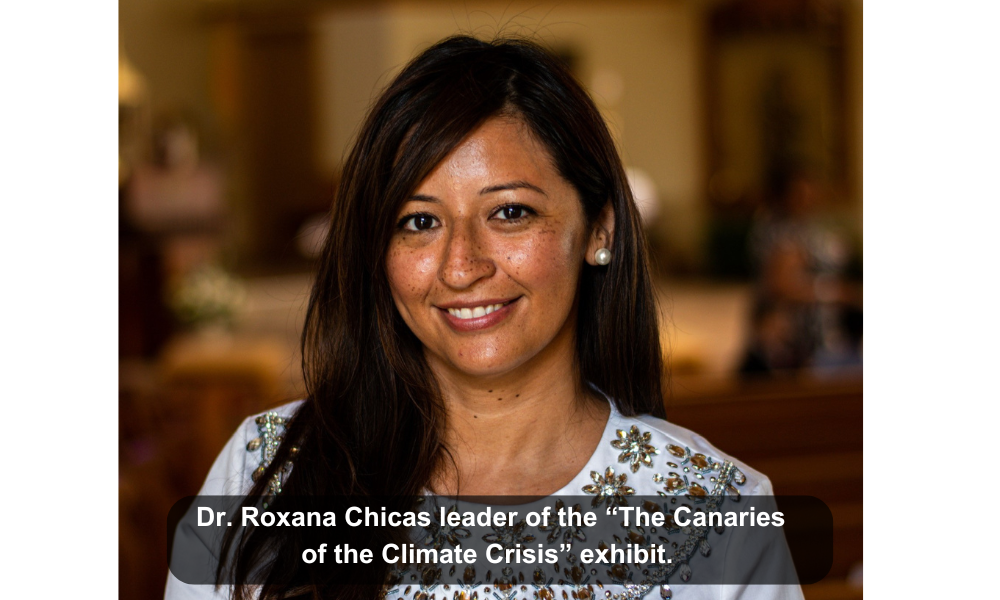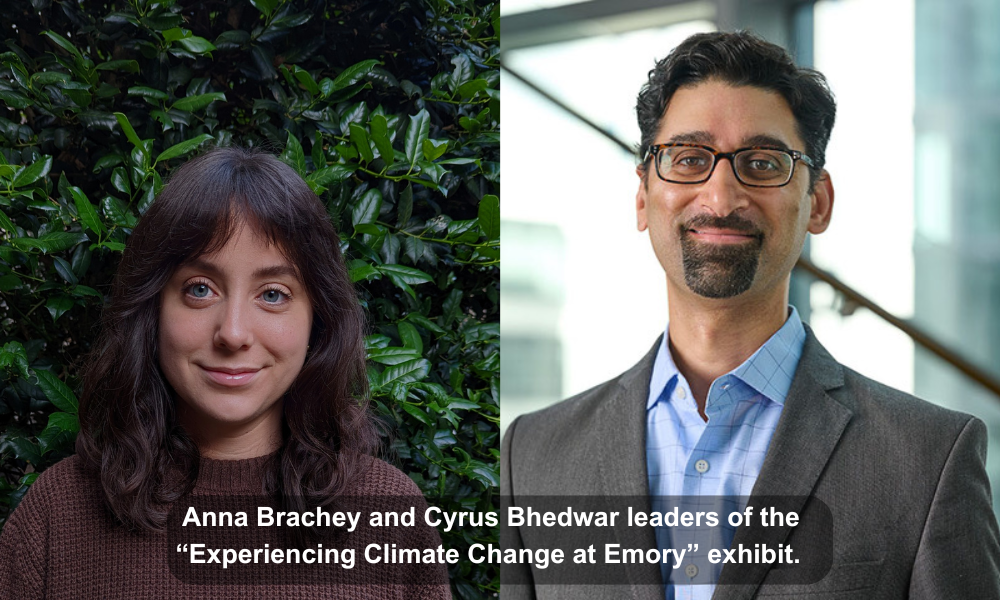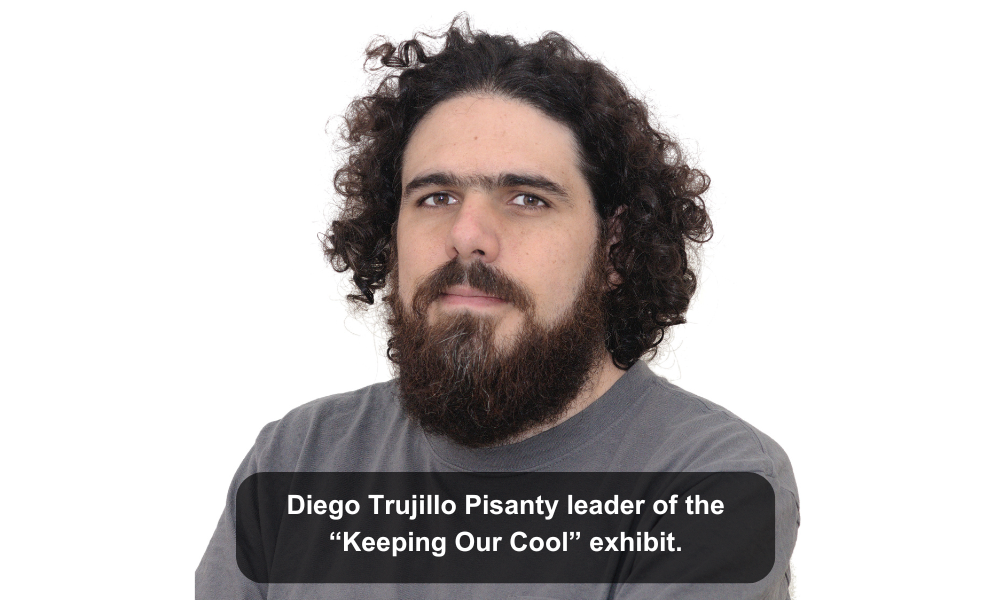Science Gallery Atlanta Announces Resilient Earth Participants
Science Gallery Atlanta is thrilled to announce the upcoming exhibition, Resilient Earth, and the 11 exhibits selected to be featured in the show.
Curated from an unprecedented pool of 187 submissions, the exhibition will feature 11 exceptional proposals selected by Science Gallery Atlanta's esteemed curatorial panel. The accepted exhibition concepts are global in scope and represent a wide variety of perspectives on climate change and its impact on the future of our planet. From immersive installations to thought-provoking interactive experiences, Resilient Earth promises to inspire, educate, and ignite conversations about our collective responsibility towards Earth.
Below you will find a sneak peek of the winning exhibits and the talented teams coming together to bring this exhibition to life. Join us in August 2024 at the Resilient Earth exhibition as we embark on a journey to explore the resilience of our planet.
For more information about the exhibition and updates on opening events, subscribe to our newsletter or visit our website.
-
Heat waves, a phenomenon exacerbated by climate change, pose an emergent global health risk. The last decade had the warmest summers on record, and this decade has already experienced record-breaking temperatures with early summer heatwaves that are longer and more frequent. The Canaries of the Climate Crisis exhibit produced by Roxana Chicas, PhD, RN is an Assistant Professor at Emory University, will showcase the physiological and biological impacts of these heat waves on outdoor workers in Florida.
-
Climate Beacon is an active sculpture capturing carbon from the atmosphere and removing high levels of nitrate/nitrite from the water during its lifetime. Our playful sculpture, quite literally made from discarded plastic children’s toys, uses color-changing lights to communicate real-time changes in surrounding atmospheric carbon count. Climate Beacon uses water from a local waterway to grow microalgae, microalgae are known for its ability to collect carbon through quick and efficient growth and cleanse nitrates from the water. Edward Kelley and Emily Newman work together as Parts Per Million Collective creating sculptures and workshops that directly address climate change and action using art.
-
Ecolectivos is an implementation research project that aims to work with communities to find solutions to address the problem of poor management of plastic waste, focusing on not burning it in household fires. Working together with the rural community members in La Montaña de Santa Maria Xalapán, Jalapa in Guatemala, Dr. Lisa Thompson and Dr. Eri Saikawa, Emory University Faculty, will work together with the Ecolectivos research team and Susana Aragon, a Peruvian multidisciplinary artist and educator, to create an exhibit illustrating the burden and potential solutions to the plastic problem in low-resource communities both in the United States and in Guatemala. The research team consists of members from the Center for Health Studies (CES) of the Universidad del Valle de Guatemala (UVG), the Nell Hodgson Woodruff School of Nursing and the College of Arts and Sciences at Emory University, and the University of California, San Francisco (UCSF) in the United States.
-
Emory’s Office of Sustainability Initiatives has spent the last 18 months engaging with the Emory community and drafting its 2023 Climate Action Plan. The Climate Action Plan is accompanied by several supplemental addenda, including the Climate Art Addendum. Led by Anna Brachey and Cyrus Bhedwar, this exhibit titled "Experiencing Climate Change at Emory" will expand upon the work of the climate action plan by curating a small collection of visual work from the Emory Community.
-
Across the globe, an estimated 1 billion people reside along coastlines, with many facing escalating challenges such as erosion, flooding, and sea level rise. Consequently, several nations are committing substantial financial investments to floating climatopias, positioning them as a novel frontier for adaptation, development, and climate resilience. Led by Jola Ajibade, a faculty member at Emory University, the Floating Climatopias exhibit will showcase an artistic representation of floating imaginaries from various regions worldwide, inviting guests to participate in a public dialogue regarding the feasibility, environmental impacts, and equity implications of these innovative solutions. Dr. Jola Ajibade is an Associate Professor and a scholar-activist in the Department of Environmental Sciences at Emory University. She explores how cities are adapting and transforming as a result of climatic impacts and extreme events by embracing practices such as managed retreat programs, constructions of climatopias, tree-planting, city revitalization programs, renewable energy projects, and blue-green infrastructure.
-
This acronym underscores the need for Atlanta to embrace a forward-looking and inclusive urban environment capable of accommodating climate refugees while ensuring the well-being of all residents. Without proper planning, Atlanta's future appears bleak. Nevertheless, it is not too late to envision a city capable of supporting climate refugees while enhancing the quality of life for all. Dr. Sarah Febres-Cordero, faculty member at Emory University, and Dr. Daniel Smith, faculty member at Villanova University will undertake the development of an artistic representation portraying the future of Atlanta. This exhibit will conceptualize Atlanta as an international city grappling with an influx of climate refugees. They envision a proactive harm reduction approach where all possible measures have been implemented.
-
Exploring the impact of our movement patterns on the world we inhabit, "If We Stay Still" utilizes sound, video, sculpture, and music to create an immersive, interactive environment in which stillness and action feel both unnervingly impossible and urgently necessary. This exhibit - envisioned by Jeremy Bolen, an artist-researcher filmmaker and assistant professor at Georgia State University, alongside Katherine Young, a composer, sonic artist, and assistant professor at Emory University - aims to provoke contemplation on the ramifications of slowing our global movement. If We Stay Still will reflect on the potential of slowing our movement throughout the planet while speculating on what the planet might look and sound like in a geo-engineered future.
-
Diego Trujillo Pisanty is an artist from Mexico who is leading the production of an exhibit titled “Keeping our cool.” This piece will deal with the difficulty of addressing the consequences of climate change on an individual level and will encourage guests to work together to see the impact of their collective action. An interactive artwork that can only be seen by members of the public willing to invest a significant amount of effort in engaging with the piece.
-
Developed by artist Bea Lamar, this immersive, interdisciplinary art installation is designed to bring the restorative experience of forest bathing to an urban, indoor setting. This installation aims to blend the wisdom of ancient forest-connected cultures with contemporary environmental science, creating a lush, purifying green space that provides measurable air quality improvements and a tranquil meditative environment, rich in negative ions similar to a natural forest.
-
Led by Jeremy Speed Schwartz, an artist from Kennesaw State University, The Paper Ecosystem exhibit will invite guests to explore how their very existence, even when passive, affects the environment around them. The piece will emphasize the fragility and interconnectedness of the ecosystem and the multiplying effect that humans in groups have.
-
There is an incredible need for an alteration of many people’s “personal climates,” leading to the changes essential to save our home, the Earth. Dr. Amanda Jacob, an Emory-based neuroscientist, and Craig Coleman, an artist and curator are teaming up to produce the exhibit titled Thermal Reverberations. Thermal Reverberation is an innovative piece that will serve as a powerful visual representation of neuroplasticity, the ability of the brain to change in response to internal and external stimuli. This exhibit will draw profound parallels between the plasticity of the human mind and the dynamic nature of our personal and global climates.











